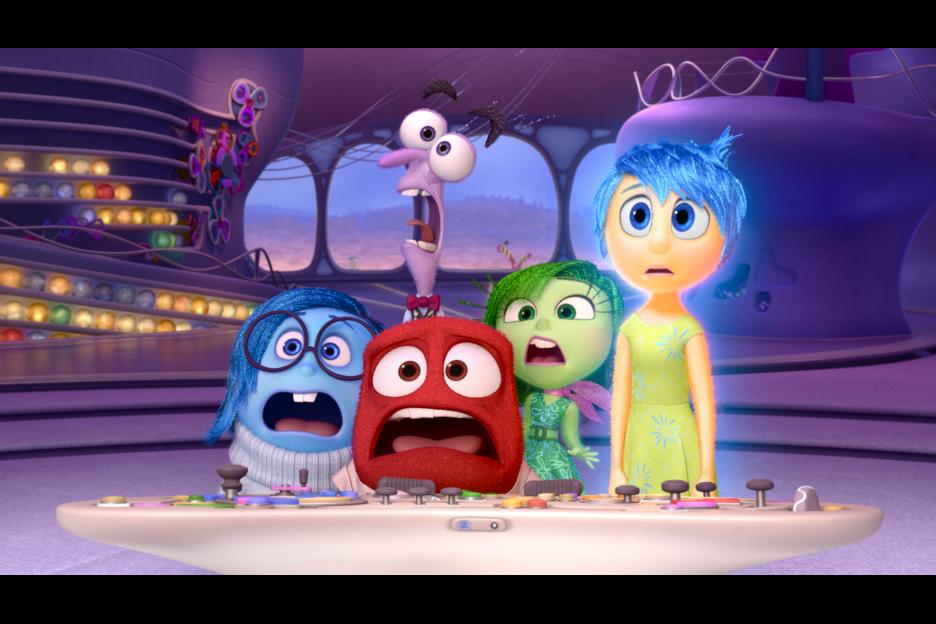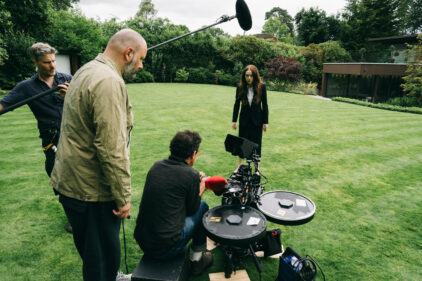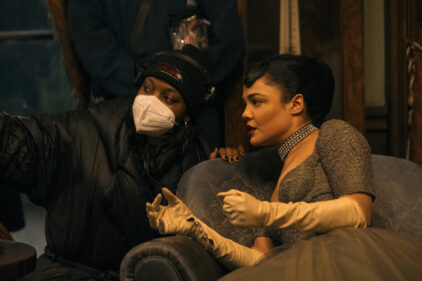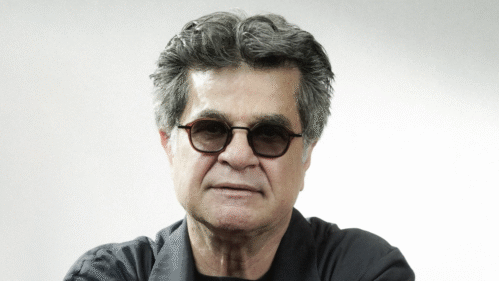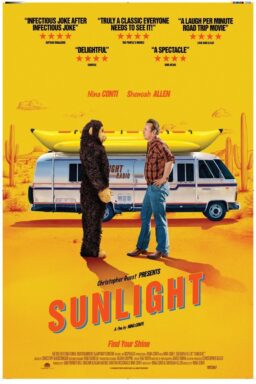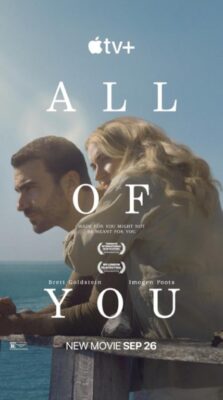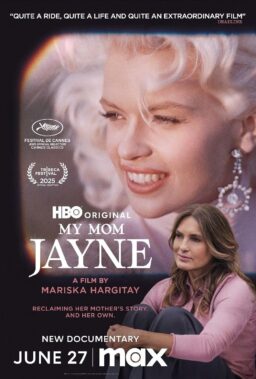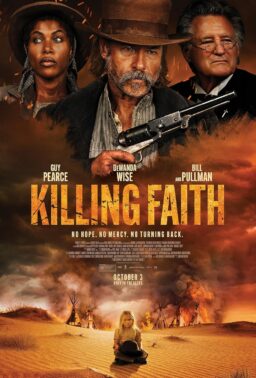What makes us tick? After going deep underwater, into outer
space, and into our toy chests, Pixar took on their biggest challenge by going
into the uncharted territory of a pre-teen girl’s emotions with “Inside Out,”
opening this Friday. After its premiere at the 2015 Cannes Film Festival, the
buzz was deafening that this marked a return to form from the revolutionary
studio that gave us “Toy Story,” “Finding Nemo,” “Up” and “WALL-E.” The buzz
did not lie. Director Pete Docter (“Monsters Inc.,” “Up”) and producer Jonas
Rivera recently sat down with us to talk about the response to the film, making
movies that work for both parents and kids, and the amazing Pixar process.
A little off-topic
but something that’s always intrigued me—how are the accompanying shorts
chosen? Is there a tonal consideration to match the feature film?
PETE DOCTER: You’re giving us too much credit. “What do we
have?” (Laughs.)
JONAS RIVERA: I remember going back and “The Incredibles”
had “Boundin’” and I remember thinking that was cool.
But you don’t have a
choice, right?
PD: No. It’s the one that’s available now and we love it and
it’s all good.
JR: Although the sound designer for “Lava” also designed the
sound for our movie. I like that the film does sort of bob in the ocean and
then segues into the opening of the film in a way that’s consistent.
Absolutely. That’s
what made me think of it.
PD: Good. Right on. We should take credit. (Laughs.)

With something like “Nemo”
and “WALL-E,” you’ve at least got visual road maps—what the underwater world
looks like, film representations of outer space. With this, you really don’t.
So where do you start?
JR: That’s a great question.
PD: We started with research anyway. Pretty early we
realized how little we knew about it. We started with any sort of verbal cues
we could use. “I feel blue.”
JR: “Blow your top.”
PD: Those kind of things led us in specific directions. Then
we gave our artists free rein. I gave them character descriptions and
descriptions of sets. And then they would just start drawing.
JR: “I lost my train of thought.” Oh, that’s an idea, and then
that starts to feed design. It has to sort of hold up the writing.
PD: In story, we would make a big list like “Brainwashing,” “Stream
of Consciousness”—some of it made the film.
JR: The challenge is for the audience to see it and be like,
“Of course, this is how the mind looks,” which is our ultimate goal.
The film never plays
down to gender roles. She doesn’t play with princesses; she plays hockey. How
consciously did you choose to not make this a “little girl” or “little boy”
movie but just a movie about kids?
PD: It is a girl for a specific reason: It was based on
watching my daughter grow up. Also, in doing the research, we learned that
there is no one more socially attuned and aware than an 11 to 17-year-old girl.
That seemed right. Again, watching our own daughters—my daughter was a great
example of wearing pretty, pink sparkles and then going and playing in the mud.
Playing sports. Tap dancing. A mix of things. We also had great female
contributors both in the story department and Meg Lefauve is one of our
writers. It’s something we wanted to do.
JR: We have daughters. We were excited to have a character
who felt like a real girl.

How much is based on
your own parenting?
PD: I don’t think the movie would have come to me if I wasn’t
a parent. I don’t think it would have resonated with any of us. Jonas has
younger kids. My daughter was 11 when we started—right about that age. And our
co-director—Ronnie Del Carmen—also has kids. I would note how she was changing,
getting quieter, and Ronnie would be like, “It gets worse.” It’s like a cautionary
tale in one sense.
JR: We had a three-way view of everything. I sat forward
when you pitched it because I thought of myself and my kids. We said, “Everyone
has either had kids or been a kid and felt this touch of this from either side.”
Our hope was that would kind of hit and touch everybody.
PD: For me, when I’m watching my daughter, part of the
reason things stick with me is because of my own junior high years, which were
difficult, which a lot of people can relate to—the trouble of growing up.
So much of this movie
feels like it plays to parents more than kids, which I don’t mean in a bad way,
but how do you balance going too far with that and losing the children in the
audience?
PD: I feel like our design sense—a lot of things that come
with the way we use the medium—envelops kids. They love the use of color. The
sense of design that we gravitate towards. First of all, I’m not sure if I was
making a more adult film that I would choose these emotions and portray them
the way we did. But subject matter-wise, we’re trying to impact each other. As
we build the reels, we want John Lasseter to cry. At the same time, we know
kids will see it and we have that concern, not so much that something would be
inappropriate but maybe too complex. We had a screening maybe two years ago. We
brought our own kids and friends and family—filled the theater with kids about
3 to 14. It was really cool because not only did they get it—we had a 5-year-old
come back and tell us the entire story, name all the personality islands,
explain how they work and the emotions and everything.

I think people
underestimate kids.
JR: I do too! We just load-balance it. We make sure it’s
entertaining enough but deep enough for parents. And fun, like the movies we
saw for kids. All of those things. I almost found, in a strange way…kids read
it better. I’ve talked to a couple parents who are right in front of their kids
who have just explained it really well, and they say, “I don’t know if my kids
got it.” I just heard them get it.
This movie doesn’t
work without the right voice cast, especially the tonal balance of Amy Poehler’s
take on Joy.
PD: She recognized right away—we were pretty up front with
her with the difficulty of that part: if you write her TOO positive then you
don’t trust her and you don’t like her. She can’t be a downer, angry person or
she doesn’t read as joy. We presented it to Amy and she just said, “I think I
can help you there.” She kind of knew what to do. She said, “I can’t get away
with saying things that other people can’t.” She’s pretty self-aware.
JR: Amy was really clutch. She even came on and wrote with
us for a while. Our first session was just her going through the script with us
and she would come up with ways to say things that was helpful to us. She
threaded a narrow needle of likability with a little bit of tooth.
You mentioned making
John cry. Can you speak a little about the Pixar process there? At what points
are people like John or Andrew [Stanton] involve in a film like this one?
PD: We like to use John as a surrogate audience member
because he’s really great at intuiting how people react to things. At the very
beginning, when you’re pitching the concept, if he leans forward, you know, “OK,
we got something. He’s hooked. He sees the potential.” Generally, we’d say
there are 2 to 3 months between check-ins…
Over how long a
process?
PD: Five years. We may meet more frequently to look at
specific designs, but, as a story, it’s every 3 months.

Who?
PD: Jonas and I, Ronnie, our head of story, our editor, our
production designer, and John comes in. We’ll pitch, read pages, look at a cut
of the movie or just a scene.
JR: We bounce ideas around. And it’s not for John to say, “Approved.”
It’s just to discuss the movie. “You had said something earlier about this, let’s
try this,” whatever it is. John is a strange, amazingly talented, finger-on-the-pulse-of-the-world kind of guy.
PD: Early on, he said, “Think about going into different
people’s brains because that’s going to be really fun.” Of course, that’s the
biggest laughs in the movie. He’s also really great at understanding when
things are too complex.
JR: He’ll pull you back to your course.
With such a long
process, it has to be so simple to stray from your original idea.
PD: Oh yeah.
Has the process
always been like that?
PD: Yeah. “Toy Story” was like that. At the time, it was
John directing and the check-ins were with Disney. Pretty much. There are no
rules. If something is taking longer or you want to meet more.
Were you guys a
little surprised by the rapturous response out of Cannes?
BOTH: Yeah.
JR: We’re really proud of the movie and we like it, but, to
your point, you get so close to the movie that you don’t really know what you
have. You get these little mini panic attacks like, “Oh my God, this doesn’t
even make SENSE.” And then we got out there…
PD: We were fairly proud. This is a movie I’m proud of. But
you don’t know if people will like it. And they warn you before you go [to
Cannes].
JR: They booed poor Gus van Sant. They kind of remind you of
that atmosphere. It was a very warm reception. We couldn’t have been more
pleased. We walked out of there feeling pretty good.

